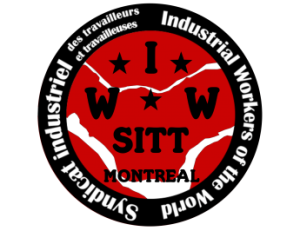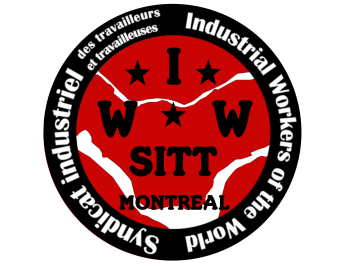The wonderful world of workfare
We have all or almost all heard of the "Thirty Glorious Years" period in Western countries or the "Quiet Revolution" in Quebec which would have given birth to the welfare state.. This state which would offer providential aid through various social programs and direct aid in the most diverse forms of aid (free education, welfare, Health Insurance, unemployment insurance) to all citizens. This support made it possible to deliver workers from the ruthless realities of the market. Without questioning the established facts of these policies, in this article I will address the thorny question of what happened to these programs once the "Quiet Revolution" or the "Thirty Glorious Years" were over.. Formerly seen exclusively as an escape from poverty, social security programs have evolved into a formidable tool of discipline covered with a shining discourse of performance and cost reduction. Welcome to the wonderful world of workfare.
A little fantasy ...
For years 80, an old speech is repeated over and over : The state is too big, he manages badly, we must cut, otherwise, it's bankruptcy. From the Lévesque government in 1980 to the Couillard government in 2014, things have not changed much. The slimming speech is usually accompanied by a performance speech. Indeed, in the face of state "excesses", a culprit is often put forward : inefficiency. The State, by its non-competitive nature (monopolistic) and partisan (populist) would set up expensive programs whose results would be poorer for lack of effective management. With social programs, it generated perverse effects on the beneficiaries. Discouraged to exit social programs, they would maintain a form of dependence on government aid. Height of horror, the latter would therefore be stuck in a vicious cycle of dependence which would lead them to be excluded from social networks. Now, social programs would be a chasm that would constitute a circle of dependency for thousands of people.
Fantastic location, fantastic solutions
Social security programs needed to be reinvented to make them effective and efficient. Like a miraculous detergent against dirt, it was necessary to have recourse to inventors of revenue in public administration. This is the launch of "new and improved" solutions. On parlait désormais de réaliser la transition d’un État « passif » à un État « actif· ». Whether to make efficiency or synergy! That we are entering a post-providence state and that we must now be avant-garde. That the fight against inertia was on. A series of marketing names which all boiled down to : Always do better with less, always. To succeed, we proposed more individualized and more scientificized solutions. Public administration had become a high-precision science.
Le workfare
"There no right to be lazy" said Bill Clinton at the start of his presidency. This very simple sentence sums up the basis of "workfare" or "work-for-benefit" : No one has to be lazy. The problem of poverty was no longer a social issue, but a question of the individual will of those who find themselves dependent on government assistance. The United States was the first country to reform such welfare policies as (la transformation de l’Aid To Families with Dependent Children (AFDC), now the Temporary Assistance for Needy Families (TANF)) for those assisted and families in need. The principle was clear : work before the service. From this point, le workfare diverge. Several forms of workfare (mostly American) promote the obligation to work a certain number of hours in exchange for benefits. This form of forced labor was a key driver of workfare, but she is not the only one. Faced with this radicalism, several other more insidious forms took place. The obligation to search for employment, to adopt certain behaviors (ex : take special courses) or accept any job offer, whatever its nature, is the most widespread standard of workfare.
The objective is to shorten the time under the benefit by encouraging beneficiaries to fight "dependence" and find a job. To succeed, this is the old stick and carrot tactic. Those who adopt the desired behaviors will be rewarded and those who deviate will be penalized. This logic can take the form of a financial incentive to find a job. Faced with this tactic, the course becomes individualized and technical. They no longer exist collective rights, but a contractual relationship between the state and the government. Categories in unemployment programs, welfare, CSST, etc. multiply and become more complex. The agent of these programs becomes an inspector of the slightest defect in the actions of the beneficiary. Do not deviate from the categories, because it could be seen as government fraud and the penalties can be heavy. This disciplinary fraud detection work can become a real behavior control tool. for example, it was possible to hear stories of video surveillance used against CSST beneficiaries to prove in court that a beneficiary is not really ill.
Work must always be seen as the solution to the beneficiary's problems and never, social security programs should be more advantageous than having a job. To make sure, governments are doing everything they can to ensure this :
The various measures adopted by the Government of Quebec since 1996 make it financially more beneficial to have a job, even low income, than ending up in income security. The APPORT program, the Return to Work Supplement, the new family allowance, housing allowance, Pharmacare and the tax credit are work incentives that give low-income workers a greater incentive to keep or get a job and ensure that workers benefit from better financial conditions than employment assistance recipients (MSS, 2000b, p. 5, in Morel, 2002, p. 66).
L’obstruction
Discipline is not only the only driving force required by social security programs in their fight against addiction. Budget cuts or disappearances are generally commonplace. On the other hand, there is another way to "degrease" the beneficiaries of the system. This is the obstruction. With the increasing complexity of requests and complaints, it has become more and more difficult for people asking for help to receive their due. We are witnessing a proliferation of documents required for a request for assistance. Often poorly mastered by beneficiaries, this tactic allows the number of beneficiaries to be discreetly reduced. The latter adds to the panoply of disciplinary tools that workfare offers to contemporary states..
Workfare in the economy
Workfare is not a doctrine whose objectives are purely budgetary. It would be very reductive to measure its impact only on this front.. In fact, workfare is a doctrine that reconfigures the relationship between labor and capital. New neoliberal economic realities lead to the proliferation of precarious jobs (part-time, de-unionization, difficult salary conditions, self-employed). Faced with this reality, social security programs which acted as a counterweight to the unfavorable work situation are mobilized to set up the opposite effect through workfare. These policies are now tools of disciplines to force the workforce to integrate these jobs. Any worker who cannot rely on these programs to refuse a job (especially unemployment insurance), they are forced to accept downward. In this context, the workfare takes on a new meaning and much more enlightening on these intentions.
To know more :
Barbier, Jean Claude. « Workfare,"Flexicurity", reflections on the international journey of political ideas in social policies and the persistence of national compromises inserted into national political cultures ”. Communication to the 10th AFSP Congress, 2009. http://www.congresafsp2009.fr/sectionsthematiques/st23/st23barbier.pdf.
Besley, Timothy, and Stephen Coate. « Workfare versus welfare: Incentive arguments for work requirements in poverty-alleviation programs ». American Economic Review 82, no 1 (1992): 249-61.
Wacquant, Loïc. "From the charitable state to the penal state: notes on the political treatment of misery in America ». Sociological perspectives 11 (1996): 30-38.
Morel, Sylvie. Workfare model or integration model?: the transformation of social assistance in Canada and Quebec. Status of Women Canada, 2002. http://www.college-merici.qc.ca/collection/condition_feminine_canada/workfare.pdf.


Leave a Reply
Want to join the discussion?Feel free to contribute!